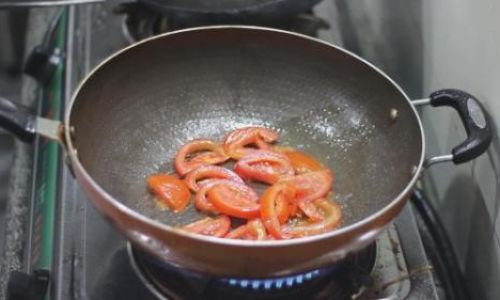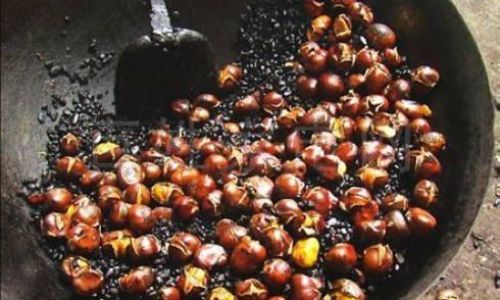The question of whether fried rice left out for a day and night remains safe to eat is one that hinges on food safety principles, bacterial growth, and proper storage practices. While the answer may seem straightforward, it requires a deep dive into microbiology, kitchen hygiene, and the science of spoilage. This article explores the risks, safety guidelines, and practical steps to determine if overnight fried rice is edible or a health hazard.
Understanding Food Spoilage and Bacterial Growth
Food safety begins with understanding how bacteria multiply. Most harmful pathogens, such as Salmonella, Escherichia coli, and Staphylococcus aureus, thrive in the “danger zone” between 40°F (4°C) and 140°F (60°C). Within this range, bacteria can double in number every 20 minutes, turning a harmless leftover meal into a potential source of foodborne illness. Fried rice, like other perishable foods, is susceptible to this risk, especially when stored at room temperature.
The primary concern with fried rice left unrefrigerated is Bacillus cereus, a bacterium commonly found in rice and starchy foods. This organism produces spores that survive cooking temperatures. When rice is cooked and left at room temperature, these spores germinate, releasing toxins that cause vomiting or diarrhea. Unlike many bacteria, Bacillus cereus toxins are heat-resistant, meaning reheating the rice may not eliminate the risk.

The 2-Hour Rule: Why Time Matters
The U.S. Department of Agriculture (USDA) advises that perishable foods should not be left at room temperature for more than two hours. This guideline applies to all cooked dishes, including fried rice. Beyond this window, bacterial growth enters a dangerous phase, increasing the likelihood of contamination.
If your fried rice has been sitting out for 24 hours, it has spent 12 times longer in the danger zone than recommended. Even in cooler environments (below 70°F/21°C), the risk remains significant. Bacteria like Bacillus cereus are particularly adept at multiplying in moist, starchy foods, making fried rice a prime candidate for spoilage.
Visual and Olfactory Cues: Are They Reliable?
Many people rely on sight, smell, or taste to judge food safety. However, these methods are unreliable indicators of bacterial contamination. Spoilage organisms like mold or yeast may produce visible changes, such as fuzz or discoloration, but pathogenic bacteria often leave no obvious traces. A foul odor or slimy texture could signal decay, but the absence of these signs does not guarantee safety.
For fried rice, signs of spoilage may include:
- A sour or rancid smell (from oil oxidation).
- Clumping or dryness (indicating moisture loss).
- Discoloration (e.g., grayish hues instead of golden brown).
However, Bacillus cereus toxins do not alter the rice’s appearance or aroma until advanced stages of contamination. By then, the food may already be unsafe.
The Role of Ingredients and Preparation
The safety of leftover fried rice also depends on its ingredients. Dishes with meat, seafood, or eggs pose higher risks due to their protein content, which bacteria feed on. Vegetarian fried rice may have a slightly lower risk but is still vulnerable to Bacillus cereus.
Additionally, the cooking method matters. Fried rice made with properly cooked rice (stored in a refrigerator within two hours of cooking) is safer than rice left at room temperature before frying. Using day-old rice, a common practice to reduce stickiness, is acceptable only if the rice was refrigerated promptly.
Storage Solutions: Refrigeration vs. Freezing
To extend the shelf life of fried rice, proper storage is non-negotiable:
- Refrigeration: Transfer leftovers to shallow, airtight containers within two hours of cooking. Shallow containers allow faster cooling, reducing the time spent in the danger zone. Fried rice stored this way can last 3–4 days in the fridge.
- Freezing: For longer storage, freeze fried rice in freezer-safe bags or containers. It can keep for up to six months, though texture may degrade over time.
Reheating Guidelines:
- Reheat to an internal temperature of 165°F (74°C) to kill most bacteria.
- Avoid reheating multiple times, as this increases contamination risks.
The Myth of the “Smell Test”
A common misconception is that if food smells fine, it’s safe to eat. However, many pathogens, including Bacillus cereus, do not produce noticeable odors until colonies are massive. By then, the toxins may already be present in dangerous amounts. Relying on smell alone is a gamble with your health.

Health Risks of Consuming Spoiled Fried Rice
Eating fried rice left out overnight can lead to:
- Nausea and vomiting: Caused by heat-stable toxins from Bacillus cereus.
- Diarrhea: Often from Clostridium perfringens or other pathogens.
- Abdominal cramps: A symptom of bacterial infection.
Symptoms typically appear within 6–24 hours and may last 1–2 days. In severe cases, hospitalization may be required, especially for vulnerable groups like children, the elderly, or immunocompromised individuals.
When to Discard Fried Rice
Err on the side of caution. Discard fried rice if:
- It has been left at room temperature for over two hours.
- It smells off, feels slimy, or shows mold.
- You’re unsure of its storage history (e.g., takeout left in a car overnight).
Comparing Fried Rice to Other Leftovers
Fried rice is riskier than dry foods like crackers but less perishable than dairy or meat. For example, cooked chicken left out overnight is universally deemed unsafe, while dried pasta might last slightly longer. However, starchy foods like rice are unique in their susceptibility to Bacillus cereus, making them a special case.
Cultural Practices and Food Safety
In some cultures, leaving rice to cool at room temperature before frying is traditional. However, this practice is safe only if the rice is fried immediately or refrigerated within two hours. Modern food safety guidelines prioritize refrigeration to minimize bacterial growth, even if it deviates from traditional methods.
Preventative Measures for Safe Consumption
- Cook rice safely: Use a 1:1.5 rice-to-water ratio and avoid overcooking, which increases moisture (a bacterial breeding ground).
- Cool quickly: Spread cooked rice on a baking sheet to cool before refrigerating.
- Label leftovers: Note the date to track freshness.
- Reheat properly: Use a food thermometer to ensure it reaches 165°F (74°C).
Conclusion: To Eat or Not to Eat?
The definitive answer: Fried rice left out for a day and night is unsafe to eat. The risks of bacterial contamination, particularly from Bacillus cereus, far outweigh any benefit of saving leftovers. While refrigeration and proper storage can extend shelf life, time spent at room temperature is irreversible.
Food safety is not about perfection but about minimizing risk. When in doubt, throw it out. Your health is worth far more than a plate of fried rice.
Final Thoughts
Modern life balances tradition with science. While grandmothers may have left rice out overnight without incident, today’s understanding of microbiology demands stricter practices. By adhering to the 2-hour rule, refrigerating leftovers promptly, and reheating thoroughly, you can enjoy fried rice safely—whether it’s fresh from the wok or reheated the next day.






0 comments